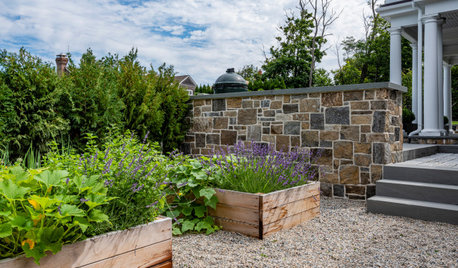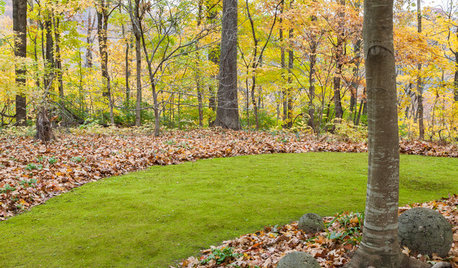Jeri and other NO SPRAY Garden Converts
bbinpa
15 years ago
Related Stories

GARDENING GUIDESHow to Switch to an Organic Landscape Plan
Ditch the chemicals for a naturally beautiful lawn and garden, using living fertilizers and other nontoxic treatments
Full Story
FRUIT TREESHow to Grow Your Own Juicy Plums
Easier than other stone fruits and with a variety of colors to choose from, plums are a versatile garden addition
Full Story
EDIBLE GARDENSHow to Grow Your Own Sweet Summer Crops
This guide will help any gardener get started on growing the freshest warm-season veggies and berries for summer
Full Story
FARM YOUR YARDHow to Grow Vegetables in Containers
Get glorious vegetables and fruits on your patio with a pro’s guidance — including his personal recipe for potting mix
Full Story
REMODELING GUIDESKnow Your House: The Steps in Finishing a Basement
Learn what it takes to finish a basement before you consider converting it into a playroom, office, guest room or gym
Full Story
GREAT HOME PROJECTSHow to Replace Your Lawn With a Garden
New project for a new year: Lose the turfgrass for energy savings, wildlife friendliness and lower maintenance
Full Story
HOUZZ TOURSMy Houzz: Creative Flair Brightens a San Francisco Apartment
Furniture hacks and a cheery color palette personalize a couple’s apartment in a converted Victorian
Full Story
GARDENING GUIDESGarden Myths to Debunk as You Dig This Fall and Rest Over Winter
Termites hate wood mulch, don’t amend soil for trees, avoid gravel in planters — and more nuggets of garden wisdom
Full Story
GARDENING GUIDES9 Ways to Be Water-Wise in the Edible Garden
Consider these tips to get a healthy backyard crop that uses less water
Full Story
LANDSCAPE DESIGNMoss: Nature’s Carpet for the Garden
Learn how to grow and use this ancient and mysterious natural wonder for delightful texture in the landscape
Full StorySponsored
Custom Craftsmanship & Construction Solutions in Franklin County








cecily
mad_gallica (z5 Eastern NY)
Related Discussions
Jeri and Other 'Found Rose' Experts
Q
no spray report for a garden in north alabama
Q
An organic spray for Aphids and other insects on roses
Q
Dramatic reds for a no spray garden?
Q
ingrid_vc so. CA zone 9
jerijen
anntn6b
sandy808
len511
greenhaven
bbinpaOriginal Author
olga_6b
jerijen
olga_6b
williamcartwright
bbinpaOriginal Author
catsrose
bellegallica
sammy zone 7 Tulsa
jerijen
len511
bbinpaOriginal Author
duchesse_nalabama
bellegallica
bbinpaOriginal Author
duchesse_nalabama
jerijen
zeffyrose
anita22
bbinpaOriginal Author
jerijen
bbinpaOriginal Author
cannabisgrower
jerijen
bbinpaOriginal Author
bbinpaOriginal Author
jerijen